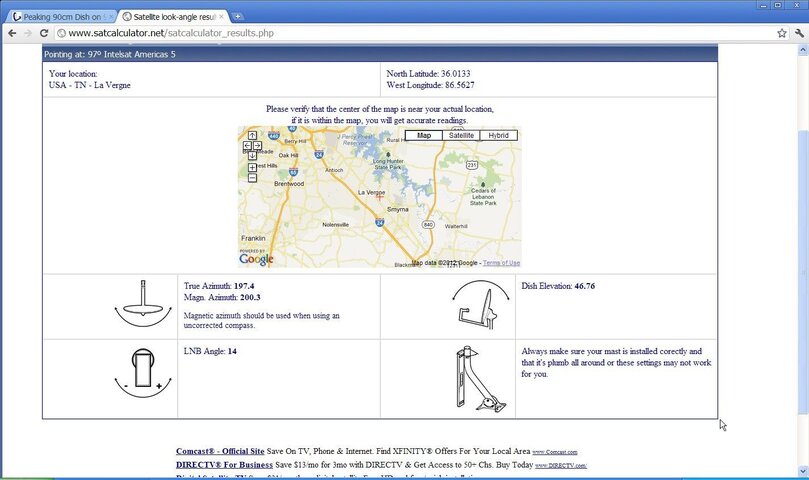It's been a while since I've tried to peak in a FTA, and now I remember why I stopped doing it. It could take an hour or more JUST TO PEAK the freaking things. I swung that dish back and forth for over 30 minutes without so much as a blip on my Super Sat Buddy 29. I'm shooting for 97 W. It looks to be a 90 cm dish with a universal Sadoun LNBF. I've got no line of sight issues, and I'm telling my superbuddy that I'm looking for a GloryStar provider, G19 orbital. Is that the correct SuperBuddy settings? If not, what else could it be?
The zip code is 37086 so I'm going for 46.5 elevation. I tried altering the elevation between 44 and 52, with no results. All I get is dB on the meter, no quality. And the dB doesn't even move AT ALL either.
Here's the most important question: What position should the LNB take inside the LNB bracket? All the way forward (towards the reflector)? All the way back (away from the reflector)? What about 'twisting' the LNB in it's bracket? Should it be at 0?
On the superbuddy, I can select several transponders. Is there a specific transponder I should be looking for while peaking? The customer is NOT a glory star customer, he just wants a bunch of free channels.
I'm going back today for another hour or two of messing with it...
The zip code is 37086 so I'm going for 46.5 elevation. I tried altering the elevation between 44 and 52, with no results. All I get is dB on the meter, no quality. And the dB doesn't even move AT ALL either.
Here's the most important question: What position should the LNB take inside the LNB bracket? All the way forward (towards the reflector)? All the way back (away from the reflector)? What about 'twisting' the LNB in it's bracket? Should it be at 0?
On the superbuddy, I can select several transponders. Is there a specific transponder I should be looking for while peaking? The customer is NOT a glory star customer, he just wants a bunch of free channels.
I'm going back today for another hour or two of messing with it...


